Let’s be honest, nothing kills the joy of cooking faster than a knife that just won’t cut it anymore. You might notice your electric knife that once used to glide through turkey, bread, or roast like butter now making a mess. This means it’s time for a sharpen-up of your tools.
But don’t worry, sharpening electric knife blades is way easier than it sounds. With just a few basic tools and the right technique, your electric knife will bring back that sharp, clean slice.
Continue reading to learn how to sharpen an electric knife and keep it working like new:
Here’s why an electric knife is your best friend
Electric knives are time-savers that make meal prep way easier. Instead of sawing through a turkey or crushing a sourdough loaf with a traditional knife, the electric carving knife handles the work with a gentle touch. Perfect slices, minimal effort, and wrists that don’t ache afterward.
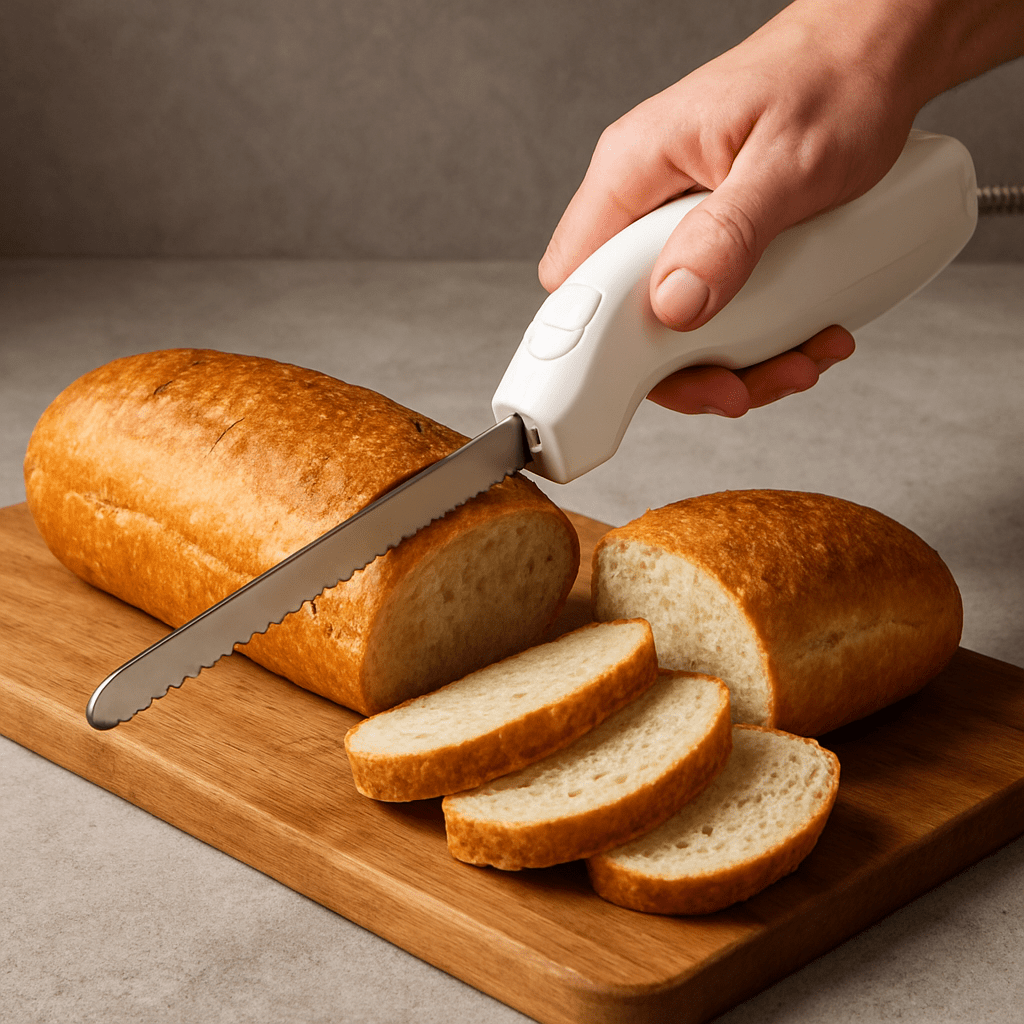
But just like any hardworking kitchen tool, electric knives need a bit of care. Over time, the blade loses its bite. When that happens, it can actually make the knife riskier to use.
Luckily, sharpening an electric knife is a way simpler process than you can imagine. It might take a minute or so for you to have a knife that looks brand new.
Spot the signs: When a blade’s telling you it’s time for a sharpening
Your electric knife won’t be screaming, “Hey, I am blunt!” but it will drop hints. If slicing has turned into a task or if the meat looks more shredded than sliced, chances are the blade is no longer working as it is supposed to.
- Watch for these red flags:
- The blade drags or skips while cutting.
- Bread gets crushed instead of sliced.
- Clean cuts turn jagged or uneven.
- More pressure is needed to cut through soft foods.
Even visually, a worn-out electric meat knife might look slightly rounded instead of crisp and clean. If your favorite electric bread knife or meat knife is struggling to perform everyday tasks, a sharpening session could be just what it needs.
Going old school: Sharpening an electric knife manually
Most electric knives come with serrated blades and you cannot sharpen the same way as a regular kitchen knife. They need something a little more specific, like a sharpening rod, ideally with a diamond coating.
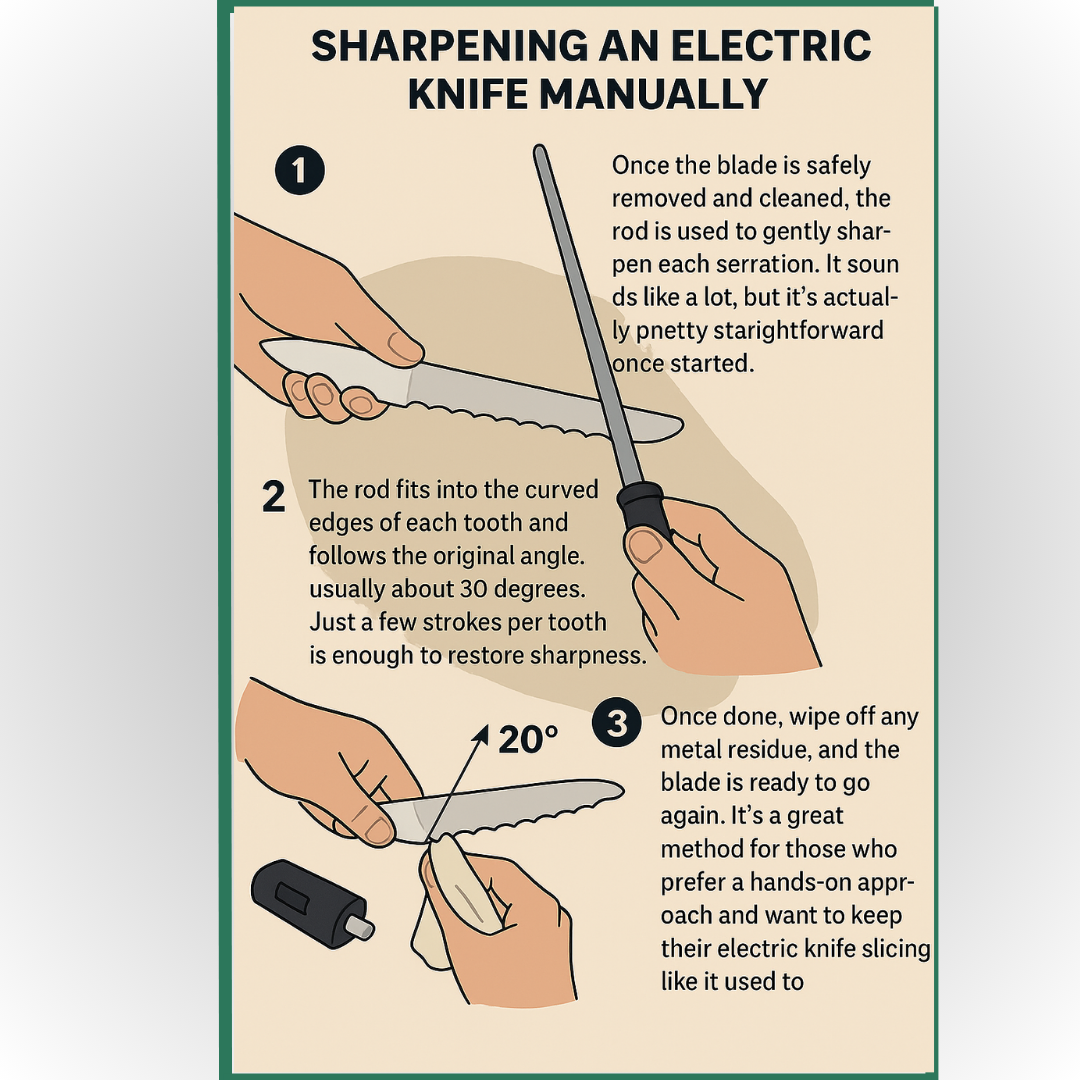
Here’s how it works:
- Once the blade is safely removed and cleaned, the rod is used to gently sharpen each serration. It sounds like a lot, but it’s actually pretty straightforward once started.
- The rod fits into the curved edges of each tooth and follows the original angle, usually about 20 degrees. Just a few strokes per tooth is enough to restore sharpness.
- Once done, wipe off any metal residue, and the blade is ready to go again. It’s a great method for those who prefer a hands-on approach and want to keep their electric knife slicing like it used to.
Prefer the easy way? Try an electric knife sharpener
If you don’t feel like sharpening your knife by hand, there’s a faster and simpler option i.e. an electric or automatic knife sharpener. These clever gadgets take all the tricky stuff off your plate.
Just slide your knife into the slot and let the machine do its job. You don’t need to worry about the right angle or pressure. Most work best with straight-edge blades, but some are cool with serrated ones too.
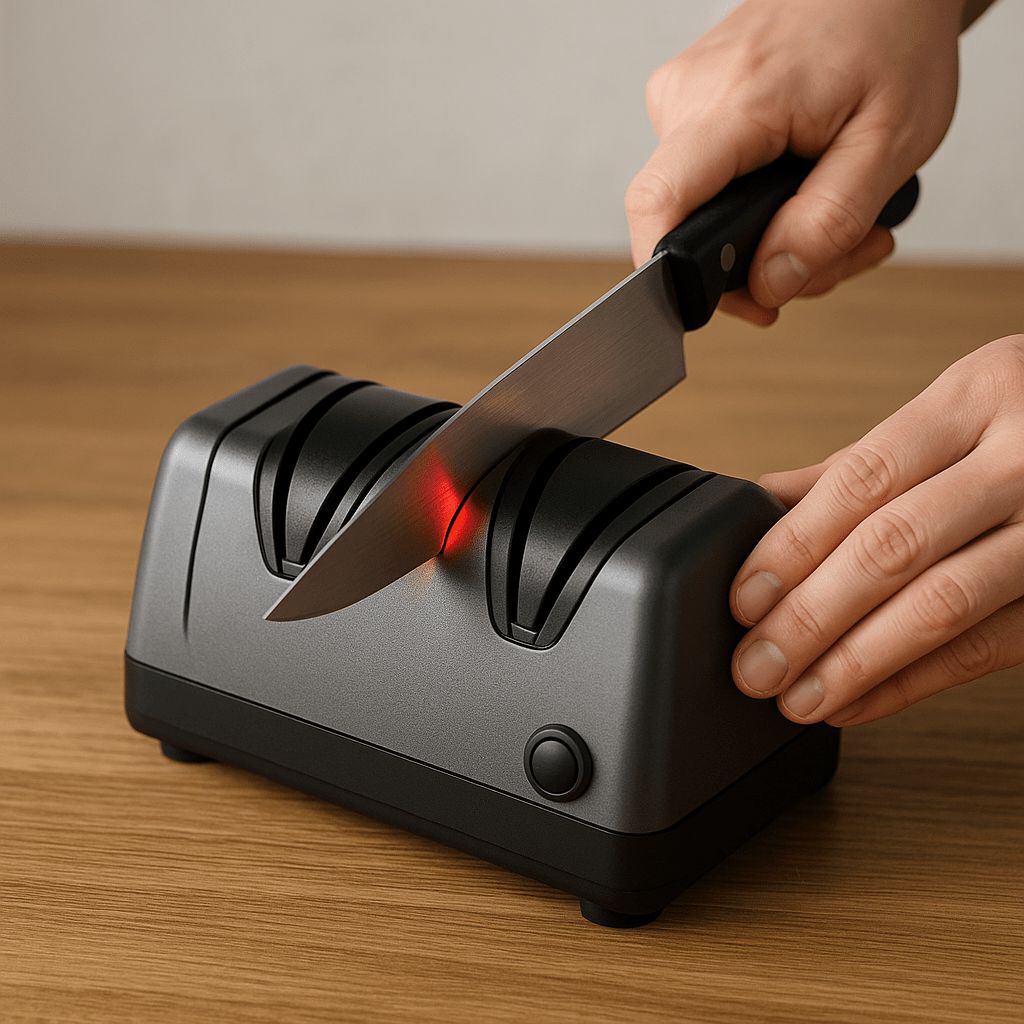
Before you start, make sure your sharpener is right for your knife. Some blades, like electric meat knives or unusual blade shapes, might need a special touch. But once you’ve got the right match, it’s basically plugging in and pulling through!
Avoid frequent sharpening by keeping the blade sharp longer
A freshly sharpened blade is a joy to use, but keeping it that way? That’s all about smart habits.
- Clean regularly: Wipe the blade after every use, and make sure it’s dry before putting it away. Moisture and food particles dull edges quicker than you realize.
- Store it the right way: Where and how you keep your eclectic knife blades also plays a big role. Instead of tossing it in a drawer with other utensils, store the blade separately. Keep it in its case or with a blade guard.
- Use it carefully: Avoid using an electric knife on bones, frozen foods, or surfaces like glass and ceramic. These materials can ruin even the stublades. Stick with wood or plastic cutting boards and use the right knife for the job.
Wrapping up: A sharp electric knife is a priority
When your electric knife is sharp, carving becomes a breeze, slices look neat and clean. Your food instantly looks more impressive on the plate.
The best part? Bringing back that razor-sharp edge doesn’t take much time or effort. Whether you use a sharpening rod or an electric sharpener, a few quick strokes are all it takes to restore that smooth, clean cut. With just a bit of regular care, that sharpness sticks around for the long haul.
So, the next time your knife feels dull or starts turning dinner prep into a struggle, don’t give up on it. A quick sharpening can bring it back to life and make every slice feel satisfying again.
FAQs on how to sharpen electric knife blades
1. Is it OK to use an electric knife sharpener?
Yes, using an electric knife sharpener is usually fine, but there are a few things to keep in mind. They’re super handy and can get the job done fast, but they might take off a bit more metal from your blade compared to other methods. That means your knife might not last as long if you use them too often.
2. How long will an electric knife sharpener last?
The grinding stones of an electric knife sharpener do wear out eventually. But if you’re just using it at home, they should easily last you 6 to 8 years, maybe even longer, depending on how often you use them.
3. How do you maintain an electric knife?
It is very easy and convenient to maintain an electric knife for long-term use. You just need to clean the blades after each use, store the knife safely, and be careful of where you are using it.

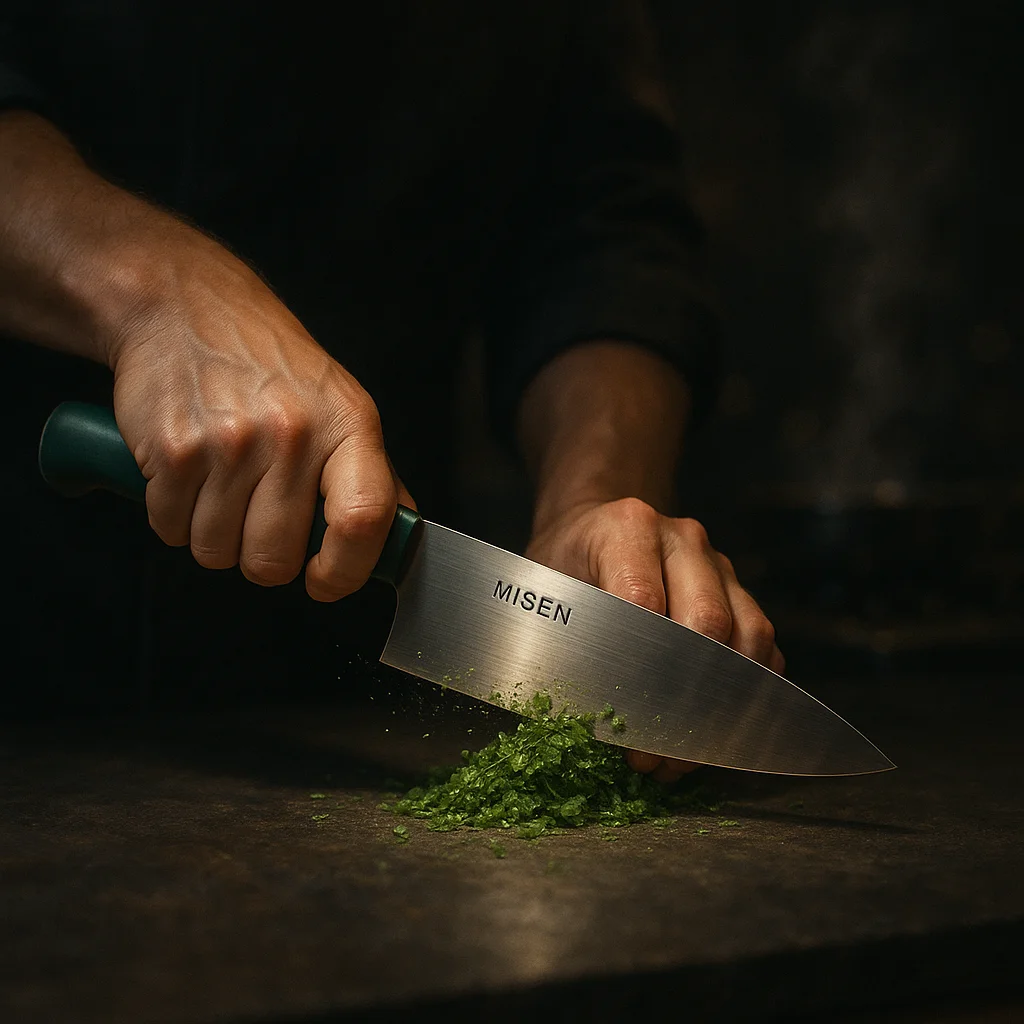
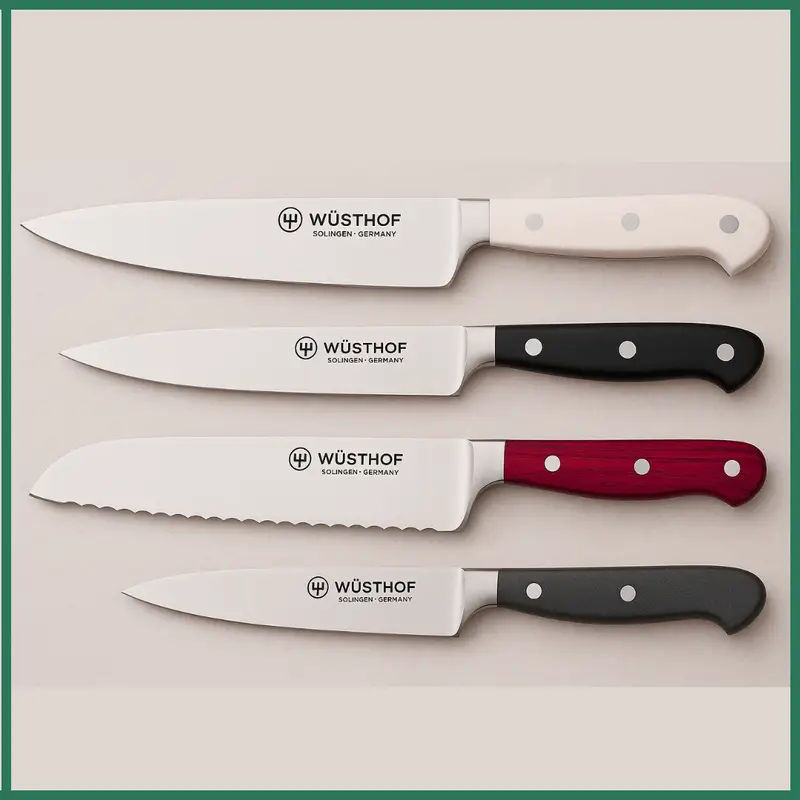
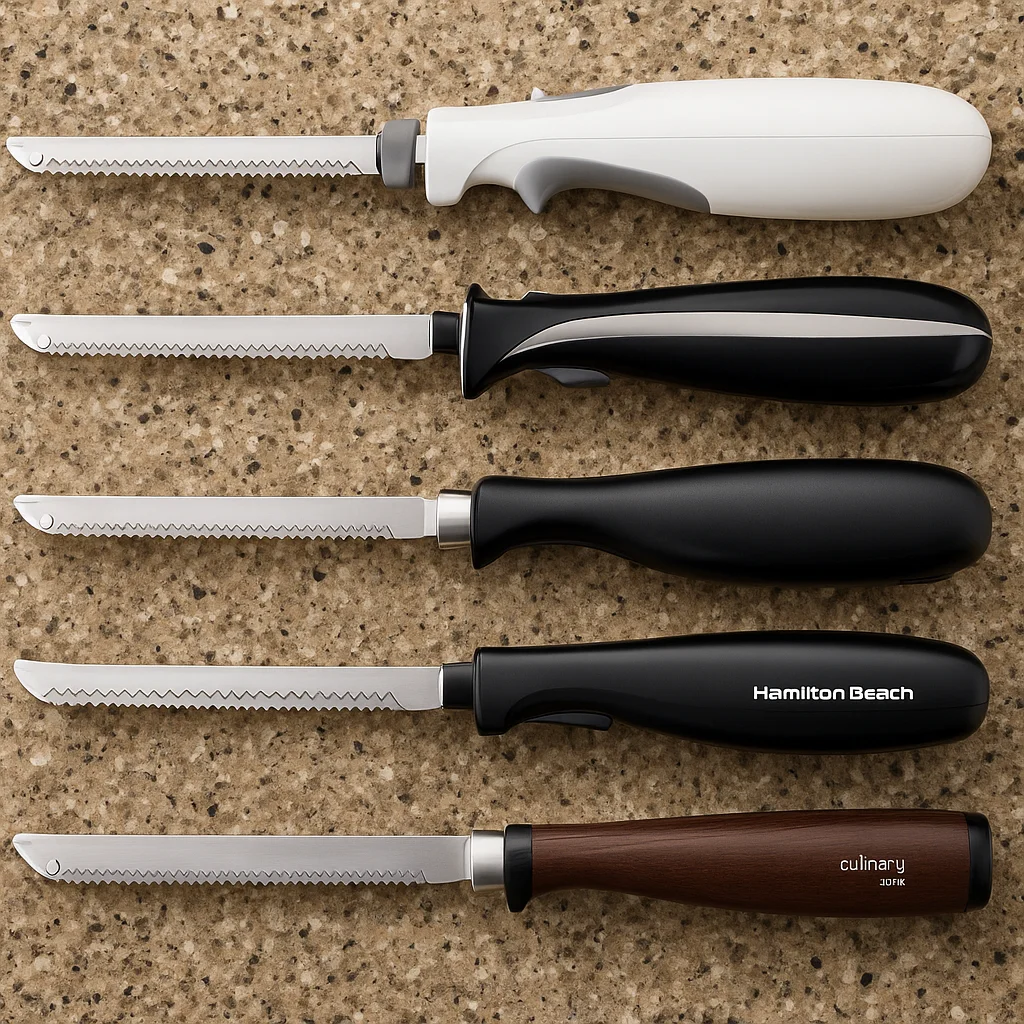
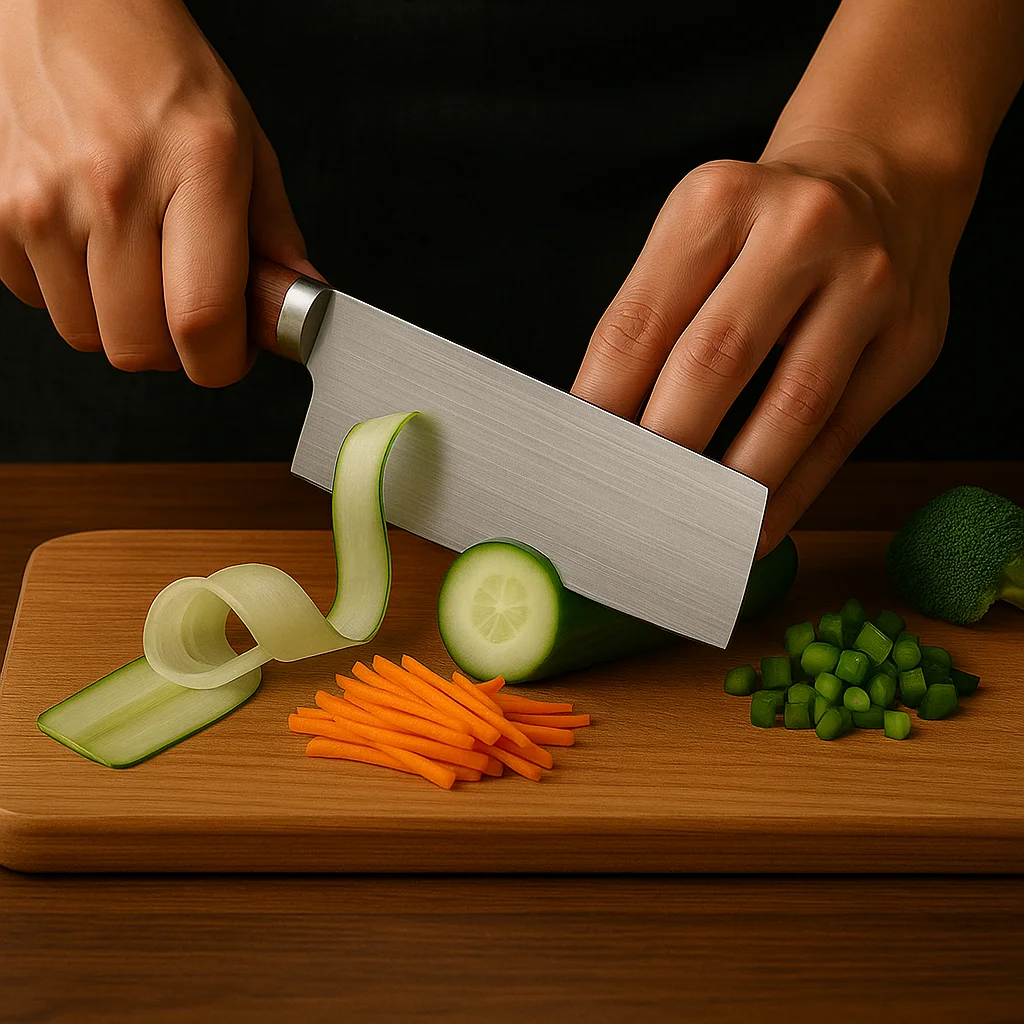
Leave a Reply